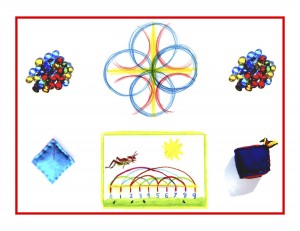Day 145
For one year, 365 days, this blog will address the Common Core Standards from the perspective of creating an alternate, ambient learning environment for math. Ambient is defined as “existing or present on all sides, an all-encompassing atmosphere.” And ambient music is defined as: “Quiet and relaxing with melodies that repeat many times.
Why ambient? A math teaching style that’s whole and all encompassing, with themes that repeat many times through the years, is most likely to be effective and successful. Today’s post will begin reviewing the Common Core ELA standards, moving through them more quickly than the Common Core math standards. The standards will be posted in groups of three to five in blue, followed by their ambient counterparts.
English Language Arts Standards > Reading: Literature > Grade 2
Craft and Structure
CCSS.ELA-LITERACY.RL.2.4
Describe how words and phrases (e.g, regular beats, alliteration, rhymes, repeated lines) supply rhythm and meaning in a story, poem, or song.
CCSS.ELA-LITERACY.RL.2.5
Describe the overall structure of a story, including describing how the beginning introduces the story and the ending concludes the action.
CCSS.ELA-LITERACY.RL.2.6
Acknowledge differences in the points of view of characters, including by speaking in a different voice for each character when reading dialogue aloud.
When the story is faithfully retold by the children, these nuances are included, without however a conscious picking apart of the story to show the abstract concepts demanded by this standard. The story is given and received whole. Steiner said attempting to analyze a fairy tale (story) is like pulling apart a flower. By the way, when Waldorf students study botany in Grade 5, flowers and plants are not dissected, but rather closely and lovingly observed in their natural environment and then drawn whole (root, stem, leaf, flower, and fruit) in their main lesson, self-made textbooks. Classic poetry, songs, limericks, tongue twisters, and more are included in the morning circle, learned by heart, and integrated with rhythmic movement. Here are a few examples:
Classic: Caterpillar
Caterpillar / Brown and furry, / Caterpillar in a hurry, / Take your walk / To the shady leaf, or stalk, / Or what not, / Which may be the chosen spot. / No toad spy you, / Hovering bird of prey pass by you; / Spin and die, / To live again a butterfly.
Christina Rossetti
Humorous: What Became of Them?
He was a rat and she was a rat / And down in one hole they did dwell, / And both were as black as a witch’s cat, / And they loved one another well. ? He had a tail and she had a tail, / Both long and curling and fine, / And each one said, “Yours is the finest tail / In the world, excepting mine.” / He smelt the cheese and she smelt the cheese, / They both pronounced it good, / And both remarked it would greatly add / To the charms of their daily food. / So he ventured out, and she ventured out, / And I saw them go with pain, / But what befell them I never can tell, / For they never came back again.
Anonymous
Limericks:
A mouse in her room woke Miss Dowd / She was frightened, it must be allowed, / Soon a happy thought hit her / To scare off the critter / She sat up in bed and meowed.
There was a young lady from Leeds / Who swallowed a package of seeds. / Now this sorry young lass / is quite covered in grass, / But has all the tomatoes she needs.
Anonymnous
Describing the structure of the story is far too abstract a task at this age. Elements of the story, like the beginning as an introduction and the ending as a conclusion, are deeply taken in in a strictly experiential way, and must remain so until the capability for abstract thought is available at age 11 or 12. The children are given a wealth of stories that are developmentally appropriate and parallel to their current stage of development at every grade level. This is a priceless gift that serves to build both character and skillful ability in the growing child.
Differences in the points of view of characters are liberally communicated, both in the telling and retelling of the stories. But again, this is not made conscious by using abstract concepts as of yet. Knowledge ensues in an environment dedicated to imaginative, creative knowing, where student and teacher alike surrender to the ensuing of knowledge as a worthy goal. Tune in tomorrow to continue with the Common Core ELA standards and their ambient counterparts.












